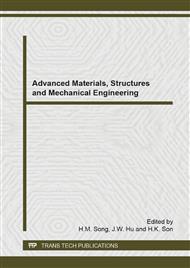p.68
p.74
p.80
p.85
p.89
p.95
p.104
p.112
p.117
About Verification of Discrete-Continual Finite Element Method for Two-Dimensional Problems of Structural Analysis Part 1: Deep Beam with Constant Physical and Geometrical Parameters along Basic Direction
Abstract:
The distinctive paper is devoted to verification of discrete-continual finite element method (DCFEM) for two-dimensional problems of structural analysis. Formulation of the problem for deep beam with constant physical and geometrical parameters along so-called its basic direction, solutions obtained by DCFEM and finite element method (FEM) /with the use of ANSYS Mechanical/, their comparison are presented. It was confirmed that DCFEM is more effective in the most critical, vital, potentially dangerous areas of structure in terms of fracture (areas of the so-called edge effects), where some components of solution are rapidly changing functions and their rate of change in many cases can’t be adequately taken into account by the standard finite element method.
Info:
Periodical:
Pages:
89-94
Citation:
Online since:
September 2014
Authors:
Price:
Сopyright:
© 2014 Trans Tech Publications Ltd. All Rights Reserved
Share:
Citation:


